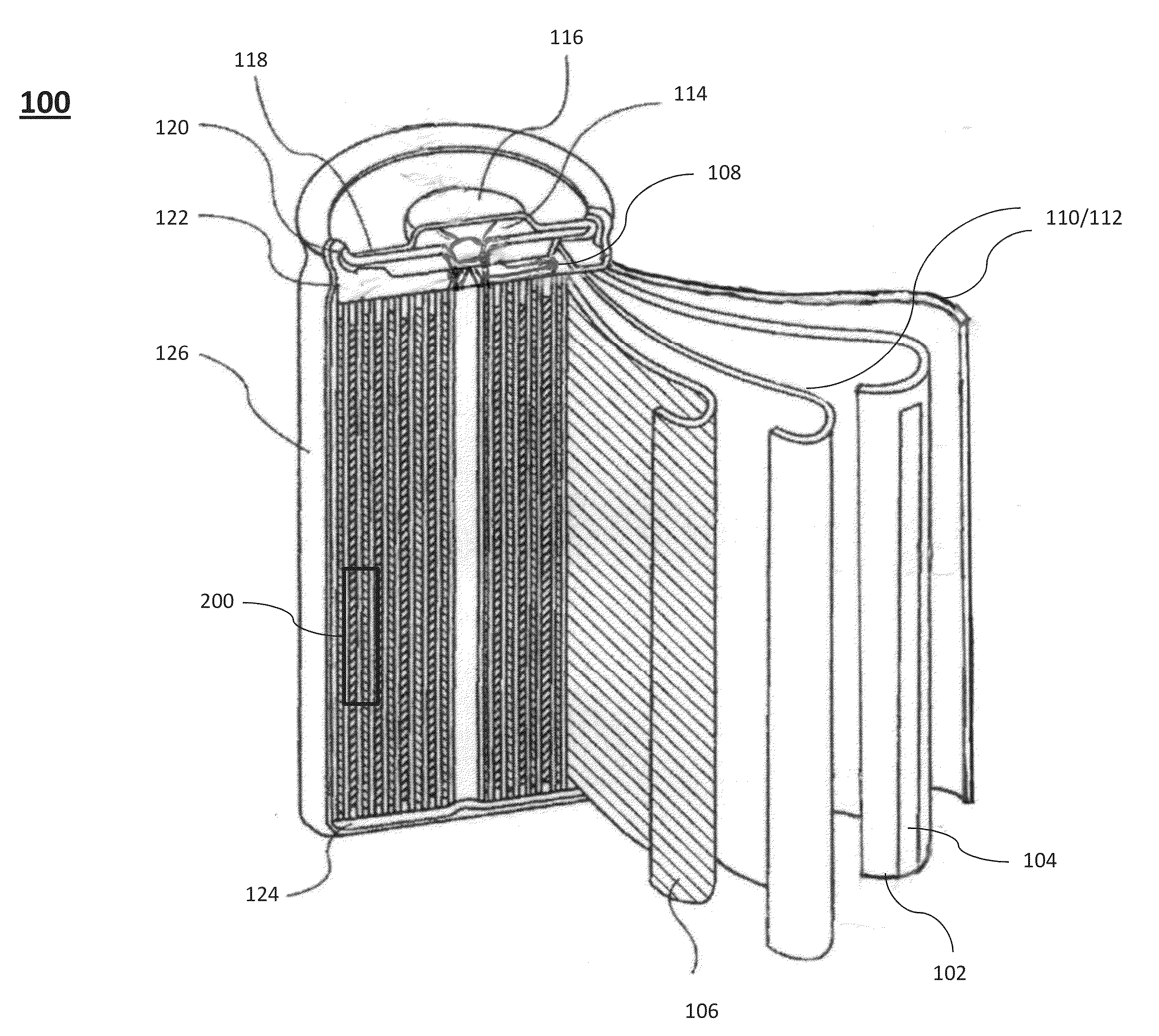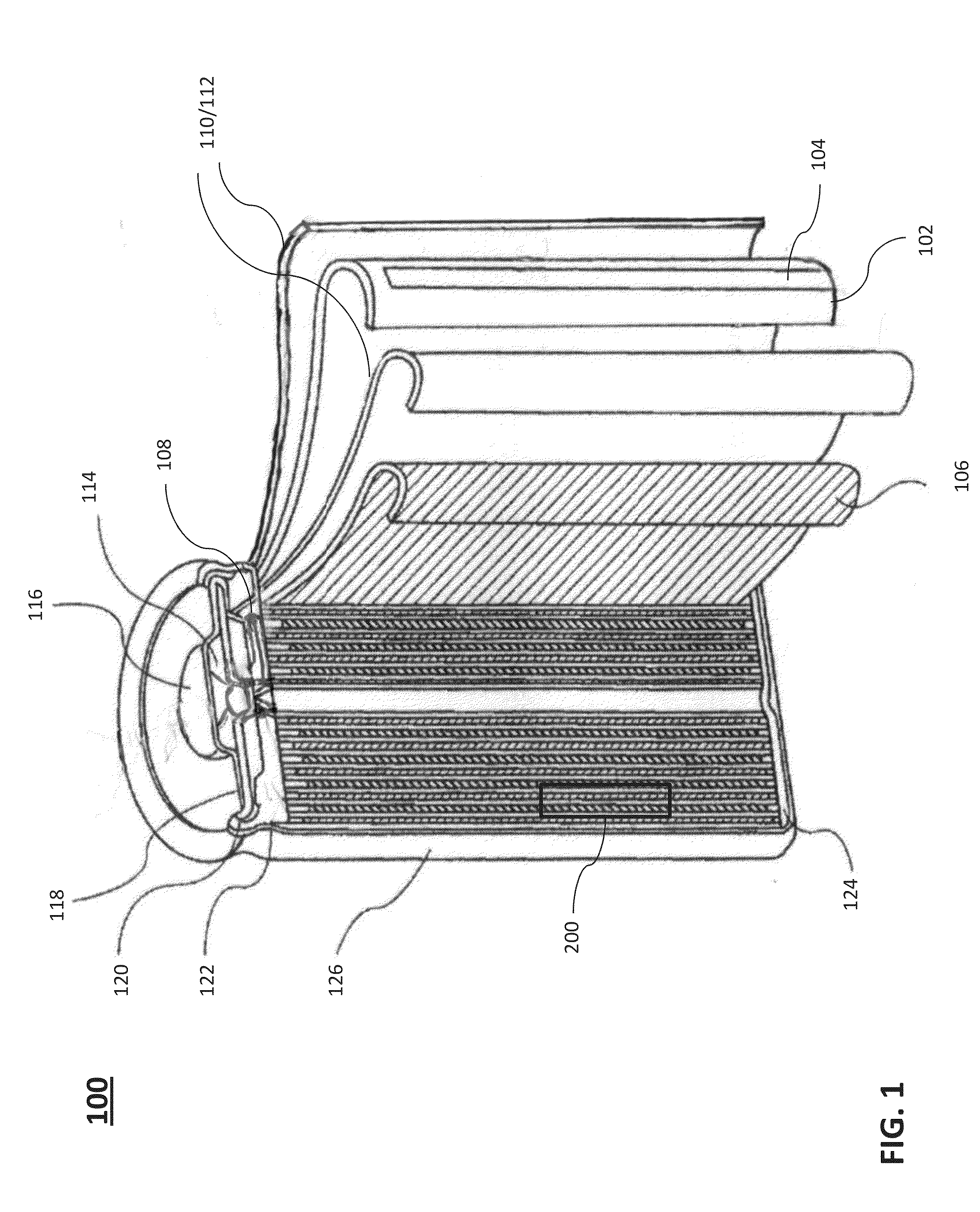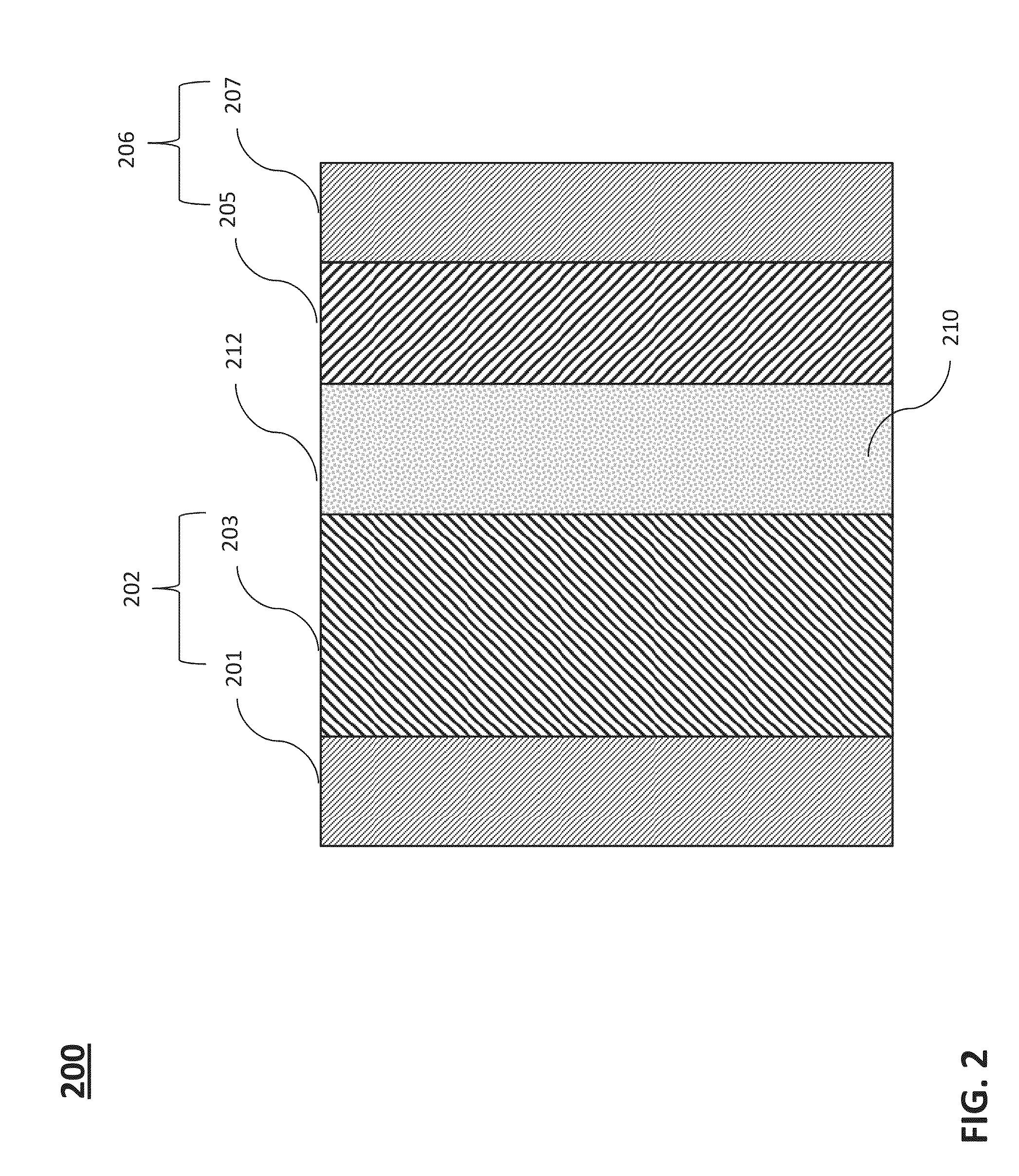Negative electrode active material for energy storage devices and method for making the same
a technology of active materials and negative electrodes, which is applied in the direction of non-metal conductors, cell components, conductors, etc., can solve the problems of graphite negative electrodes, serious safety issues, and burning of batteries
- Summary
- Abstract
- Description
- Claims
- Application Information
AI Technical Summary
Benefits of technology
Problems solved by technology
Method used
Image
Examples
example 1
TiO2 / Carbon Black Treated at Various Temperatures
[0075]TiO2 / carbon black was prepared according to Liu et al., “Nanosheet-Constructed Porous TiO2—B for Advanced Lithium Ion Batteries”, Advanced Materials, vol. 24, (May 18, 2012), pp. 3201-3204, which is incorporated herein by reference in its entirety. More specifically, 1 ml TiCl4 was dissolved in 80 ml ethylene glycol. Acetylene black was then dispersed in the solution as needed, followed by adding 1.8 g aqueous ammonia (28 wt %) under stirring. The obtained solution was refluxed at about 185° C. to 190° C. in open air for 4 hours. Generated particles were collected by vacuum filtration with a regular filter paper (particle retention: 8 to 12 μm). The generated particles were dried at 110° C. overnight and then heated at either 350° C. or 450° C. in air for 2 hours. The obtained samples are named as TiO2-1-110C, TiO2-1-350C, and TiO2-1-450C.
[0076]XRD patterns for the TiO2 samples heated at 110° C., 350° C. and 450° C. are shown in...
example 2
TiO2-2-450C and Nb0.1Ti0.9O2-2-450C
[0080]TiO2-2-450C and Nb0.1Ti0.9O2-2-450C were prepared by the solvothermal process. In one exemplary process for synthesizing TiO2, about 2.6 ml TiCl4 was dissolved in 30 ml ethylene glycol. 5.4 g aqueous ammonia (28 wt %) was then added into the above solution under stirring. The obtained solution was refluxed (e.g., at about 185° C.) in open air for 4 hours. Particles were collected by vacuum filtration with a regular filter paper (particle retention: 8 to 12 μm). The generated particles were dried at 110° C. overnight and then heated at 450° C. in air for 2 hours. The preparation procedure for Nb0.1Ti0.9O2 was the same as TiO2 except that 0.72 g NbCl5 was added in ethylene glycol as the source for Nb, besides adding TiCl4. The 450° C.-heated samples are named as TiO2-2-450C and Nb0.1Ti0.9O2-2-450C.
[0081]XRD patterns for TiO2-2-450C and Nb0.1Ti0.9O2-2-450C are shown in FIG. 5. The XRD pattern for TiO2-2-450C might be a good fit for an anatase-on...
example 3
Nb-Doped TiO2 with Various Nb / Ti Molar Ratios
[0085]Five samples were made with various molar ratios of Nb / Ti (e.g., about 100 / 0, 50 / 50, 25 / 75, 10 / 90, and 5 / 95) through the solvothermal process. The amounts of reactants are listed in Table 3. As-synthesized samples before the heating post-treatment step are identified as Nb1Ti0, Nb1Ti1, Nb1Ti3, Nb1Ti9, and Nb1Ti19, respectively.
TABLE 3SampleNb1Ti19Nb1Ti9Nb1Ti3Nb1Ti1Nb1Ti0NbCl5 (g)0.120.240.581.101.97TiCl4 (ml)0.940.880.710.450Acetylene black0.110.110.110.110.11Ethylene glycol (ml)8080808080Aqueous ammonia1.81.81.81.81.8(about 28 wt %)
[0086]Samples Nb1Ti0-450C, Nb1Ti1-450C, Nb1Ti3-450C, Nb1Ti9-450C, and Nb1Ti19-450C were obtained by heating Nb1Ti0, Nb1Ti1, Nb1Ti3, Nb1Ti9, and Nb1Ti19 at 450° C. in air for 2 hours, respectively. Samples Nb1Ti0-450C, Nb1Ti1-450C, Nb1Ti3-450C, and Nb1Ti9-450C were then heated at 550° C. for 2 hours in air to form Nb1Ti0-550C, Nb1Ti1-550C, Nb1Ti3-550C, and Nb1Ti9-550C, respectively. Samples Nb1Ti1-550C, N...
PUM
| Property | Measurement | Unit |
|---|---|---|
| particle sizes | aaaaa | aaaaa |
| particle size | aaaaa | aaaaa |
| temperature | aaaaa | aaaaa |
Abstract
Description
Claims
Application Information
 Login to View More
Login to View More - R&D
- Intellectual Property
- Life Sciences
- Materials
- Tech Scout
- Unparalleled Data Quality
- Higher Quality Content
- 60% Fewer Hallucinations
Browse by: Latest US Patents, China's latest patents, Technical Efficacy Thesaurus, Application Domain, Technology Topic, Popular Technical Reports.
© 2025 PatSnap. All rights reserved.Legal|Privacy policy|Modern Slavery Act Transparency Statement|Sitemap|About US| Contact US: help@patsnap.com



